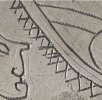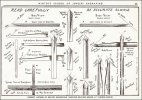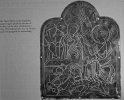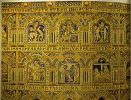farmer57
Member
Hello all,
Wanted to spark a conversation about gravers throughout history - their known (perhaps documented) profiles and how far back do these go.
I would imagine that some sort of steep angle-end graver was at the heart of it all - or was it?
Studying old armour and military arms and insignia shows (what I think) usage of 90º or similar gravers along with rounder profile cuts and even wriggle cuts - likely flat profile.
So my first (specific) question here - does anybody have an idea about the timeline and origins of the first 'wriggle' cuts in history?
Kris
Wanted to spark a conversation about gravers throughout history - their known (perhaps documented) profiles and how far back do these go.
I would imagine that some sort of steep angle-end graver was at the heart of it all - or was it?
Studying old armour and military arms and insignia shows (what I think) usage of 90º or similar gravers along with rounder profile cuts and even wriggle cuts - likely flat profile.
So my first (specific) question here - does anybody have an idea about the timeline and origins of the first 'wriggle' cuts in history?
Kris









